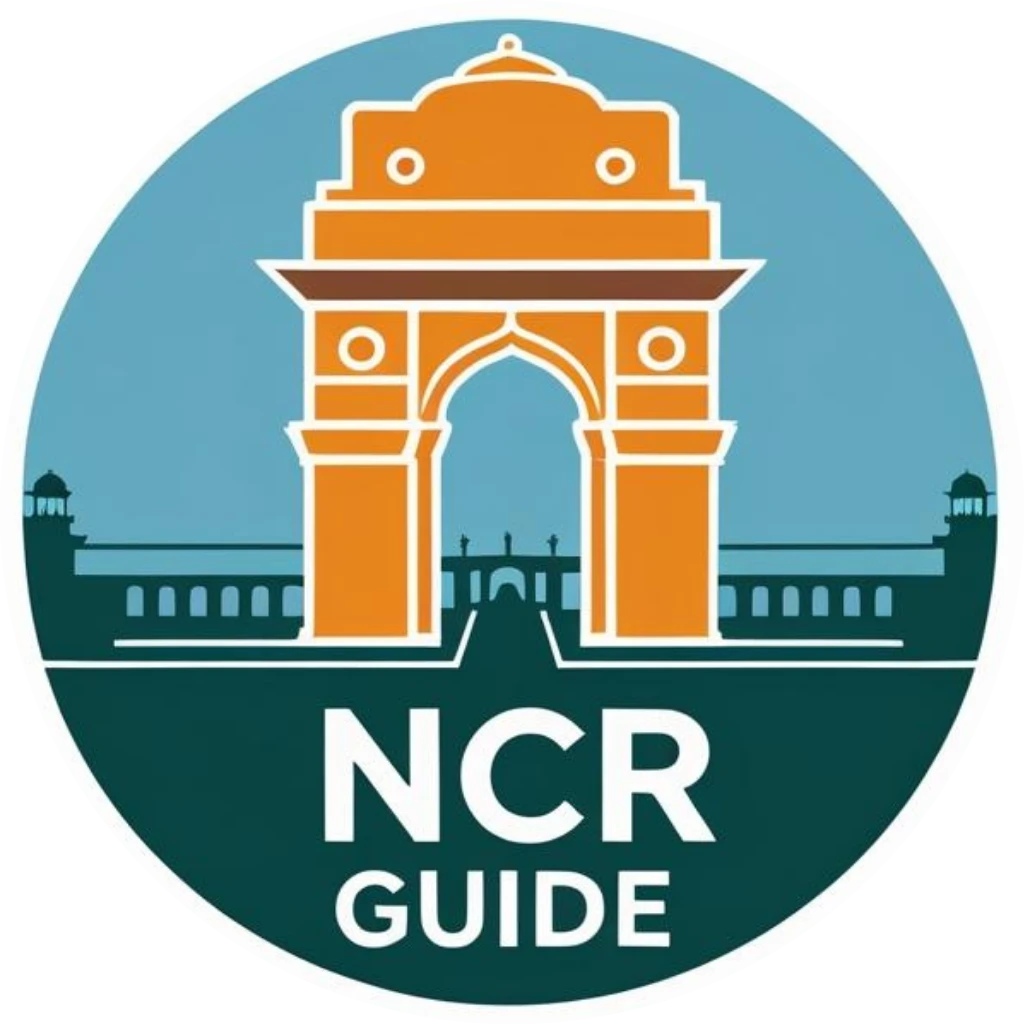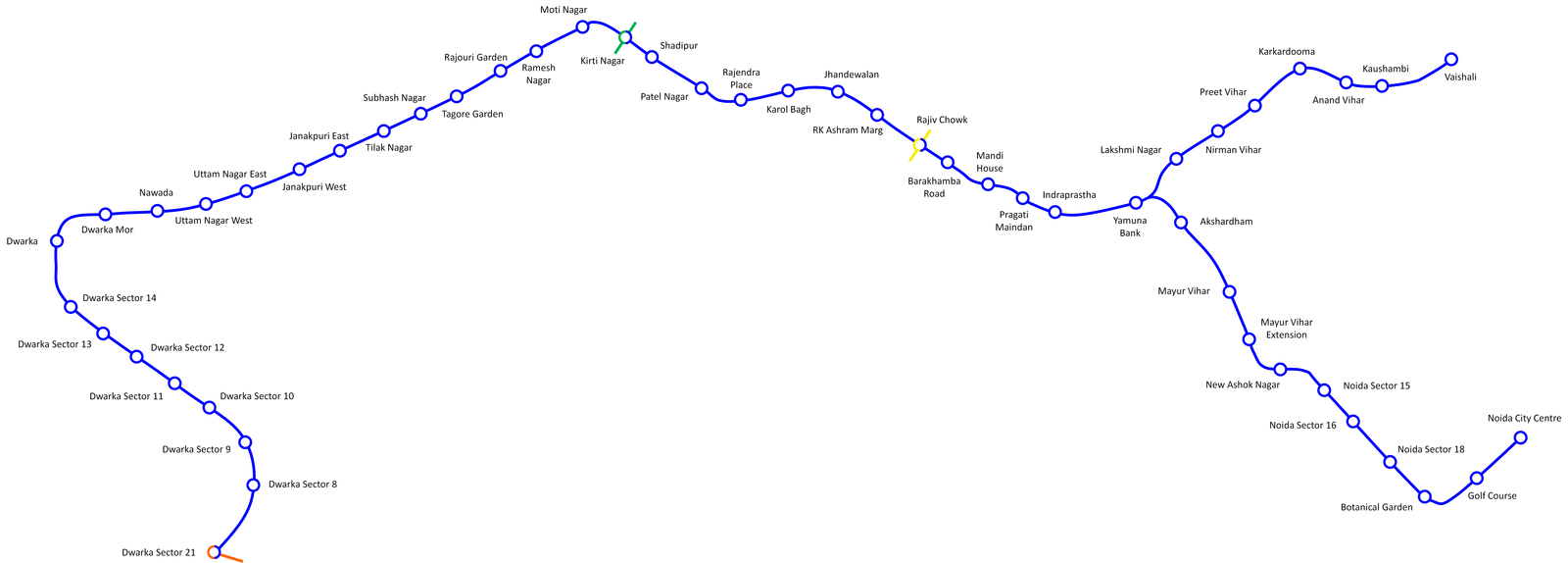If you’re traveling across Delhi-NCR, there’s a good chance you’ll ride the Blue Line at least once. It’s the longest and most used metro corridor—cutting across the heart of Delhi and extending deep into Noida and Ghaziabad. After years of commuting, navigating interchanges, and helping friends figure it out, here’s everything you need to know from a commuter’s point of view—no jargon, just what matters.
The Blue Line at a Glance
The Blue Line actually runs as two connected routes:
- Main Line: Dwarka Sector 21 to Noida City Centre
- Branch Line: Yamuna Bank to Vaishali
They split at Yamuna Bank—so if you’re headed east, pay attention to the direction. I’ve seen countless people board the wrong train here.
West Delhi: Dwarka to Karol Bagh
The ride begins from Dwarka Sector 21, one of the quieter residential pockets. From there, the metro winds through the other Dwarka sectors, each with its own character. These stations serve schools, housing societies, and offices—making them essential for daily commuters.
As the train moves toward Janakpuri and Rajouri Garden, you start hitting denser parts of West Delhi. These stations aren’t just crowded—they’re busy hubs with everything from street vendors to malls just outside the gates. If you’re getting on at Tilak Nagar or Tagore Garden, expect a full train during morning and evening hours.
By the time you reach Karol Bagh, you’re entering Central Delhi territory. You’ll see a shift: more commercial complexes, coaching centers, and small offices.
The Heart of the City: Rajiv Chowk to Pragati Maidan
Rajiv Chowk is the big one. If you’re new, just follow the crowd—they’re all going to Yellow Line or Connaught Place. The interchange here can take 5 to 10 minutes depending on the crowd. Pro tip: avoid it between 8–10 AM unless you absolutely have to.
Two stops later, at Mandi House, you can switch to the Violet Line. This area feels calmer, greener. It’s great if you’re heading toward art galleries, government buildings, or India Gate.
From Pragati Maidan onward, the ride begins to open up as the train approaches the Yamuna River.
East Delhi and Beyond: The Noida & Vaishali Split
At Yamuna Bank, the Blue Line splits.
- To go toward Noida City Centre, board the main line train.
- To reach Vaishali, take the train on the branch line platform.
Yamuna Bank has poor signage, so double-check the train display board before boarding. I’ve had to double back more than once.
Blue Line Toward Noida
This stretch serves major residential and business areas. Akshardham Station is the stop for the famous temple—expect weekend footfall. Mayur Vihar stations serve the middle-income neighborhoods of East Delhi.
As you cross the river and enter Noida, the stations become larger and more modern. Noida Sector 18 is always buzzing, thanks to malls like GIP and DLF. It’s Noida’s Connaught Place in terms of crowd and activity.
Further down, Botanical Garden becomes a key interchange to the Magenta Line—great for travelers heading toward South Delhi or the airport. The Blue Line officially ends at Noida City Centre, though many call it Sector 32 locally.
Branch Line to Vaishali
This line is a lifeline for commuters from Ghaziabad and East Delhi. From Laxmi Nagar to Karkarduma, you’ll pass through areas packed with coaching centers, mid-sized offices, and residential flats.
Anand Vihar ISBT is a transit hub—connected to long-distance buses, the railway station, and walkable access to the Pink Line. If you’re headed to Vaishali, the final stations Kaushambi and Vaishali offer good last-mile connectivity with rickshaws and app-based cabs right outside.
Key Interchanges: What You Need to Know
- Rajiv Chowk (Yellow Line): Insanely crowded. Plan buffer time.
- Kirti Nagar (Green Line): Feels less hectic.
- Mandi House (Violet Line): Smooth and accessible.
- Botanical Garden (Magenta Line): Excellent connectivity to IGI Airport, South Delhi.
- Yamuna Bank: Direction confusion is common—watch the screens.
- Anand Vihar: Transfer to Pink Line via skywalk, not ideal with luggage.
Zone-Wise Insights from Daily Us
- Dwarka–Tilak Nagar: Early morning trains are relatively empty.
- Rajouri Garden–Moti Nagar: Malls, markets, and coaching centers make it chaotic.
- Rajiv Chowk–Mandi House: Office-goers, students, and tourists converge here.
- East Delhi–Noida: Weekends feel like rush hour thanks to Akshardham and Sector 18.
- Vaishali line: Reliable for daily work travel, but can get saturated post 6 PM.
What to Expect Inside the Train
Trains on the Blue Line run frequently—about every 2 to 5 minutes. AC works well, but be prepared to stand if you’re boarding after 8:30 AM or 5:30 PM from any major interchange. Women’s coaches are at the front (from Dwarka end), and first-timers should always listen for platform announcements.
Planning Your Ride
For a smooth experience:
- Use the DMRC mobile app or Google Maps to plan real-time directions
- If you’re changing lines, budget at least 10 extra minutes
- During off-peak hours, seat availability improves dramatically
- Don’t forget to tap your card properly—penalty charges are a thing
Whether you’re traveling for work, shopping, tourism, or daily errands, the Blue Line is reliable and far-reaching. Once you learn the interchanges, crowd patterns, and zone behaviors, it becomes second nature.

